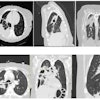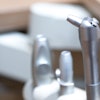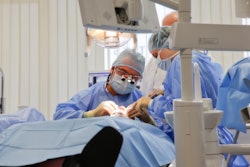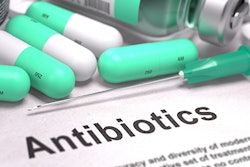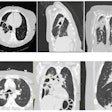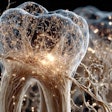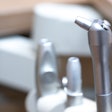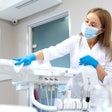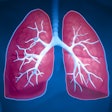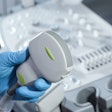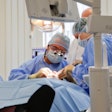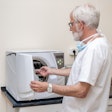Preventive antibiotics before dental work may not lower the risk of periprosthetic joint infections (PJIs) in patients who underwent total hip or knee replacements, according to a study recently published in the Journal of Arthroplasty.
Therefore, prophylactic antibiotics should only be considered for high-risk patients, the authors wrote.
“Current evidence does not support the routine use of antibiotic prophylaxis prior to dental procedures in patients who have undergone primary total hip or knee arthroplasty,” wrote the authors, led by Michael Mullen of the University of Queensland Ochsner Clinical School (J Arthroplasty, September 9, 2025).
In July, the American Academy of Orthopaedic Surgeons (AAOS) and the American Association of Hip and Knee Surgeons (AAHKS) agreed with the ADA that invasive dentistry doesn’t cause PJIs, according to a commentary that was published in the Journal of the American Dental Association in July 2025.
The AAOS-AAHKS’s new clinical guideline also agrees with the ADA’s 2015 guideline: that antibiotic prophylaxis is of no benefit in preventing late prosthetic joint infections, the authors wrote.
The goal of the study was to examine through a systematic review and meta-analysis whether dental antibiotic prophylaxis affects the risk of PJIs. Researchers searched electronic databases for studies involving adults with total joint arthroplasties who underwent dental procedures, with or without antibiotic prophylaxis, they wrote.
Dental procedures included any treatment involving gingival manipulation, such as routine cleanings. Four retrospective cohort studies, covering 157,466 patients, met the criteria and reported PJI outcomes for comparison between prophylaxis and non-prophylaxis groups.
The incidence of PJIs after dental procedures ranged from 0.07% to 0.3% in patients given antibiotic prophylaxis and 0.07% to 0.18% in those without it. Across all included studies, none showed a statistically significant difference in PJI rates with or without antibiotics, they wrote.
A pooled analysis of the four studies produced an odds ratio of 1.12 (95% confidence interval: 0.66 to 1.92), indicating no meaningful increase in PJI risk without prophylaxis. There was also no observed heterogeneity, supporting the conclusion that antibiotic prophylaxis before dental work does not reduce PJI incidence.
However, the review had limitations. The included studies were retrospective cohort analyses, making them prone to bias and unmeasured confounding factors, the authors added.
“Given the low overall incidence of PJI and the potential harms of unnecessary antibiotic use, including resistance and adverse effects, current evidence supports limiting prophylaxis to select high-risk populations,” they concluded.

